Nottingham - The Arboretum
w/e 08 October 2006
All
this week's pictures were taken with a Kodak DX6490
 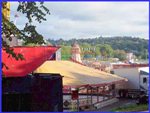 The Forest Recreation Ground
will see many visitors during the four days in early October
of Nottingham's annual Goose Fair (right) but only a few minutes
walk away there is an attraction that is open every day of the
year. If you think an arboretum is just a collection of trees
on a plot of land be prepared for a surprise for Nottingham's
Arboretum Park is much more than that. The Forest Recreation Ground
will see many visitors during the four days in early October
of Nottingham's annual Goose Fair (right) but only a few minutes
walk away there is an attraction that is open every day of the
year. If you think an arboretum is just a collection of trees
on a plot of land be prepared for a surprise for Nottingham's
Arboretum Park is much more than that.
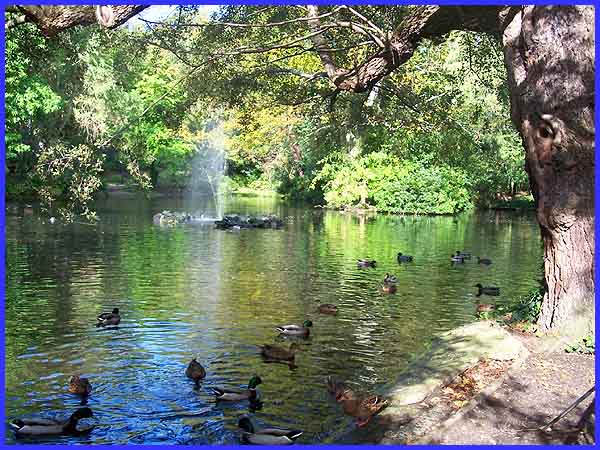
For example there is a lake in the park complete with fountain
and the usual collection of waterfowl. The lake appears on a
map of the area published in 1885 but in those days it was marked
as 'Fish Pond'. The Arboretum at that time had been in existence
for more than thirty years having been officially opened on May
11th 1852 with about 15,000 people in attendance.
|

The design of the park had been overseen in 1850 by one Samuel
Curtis whose background was as a botanist and horticultural publicist
and who had previously been involved with the design and layout
of Victoria Park in London's East End.

I'm not sure whether the circular aviary (not pictured) constructed
about 1892 was included in Mr Curtis' plans but it has now been
added to and, sited alongside the lake contains a variety of
exotic birds.
|
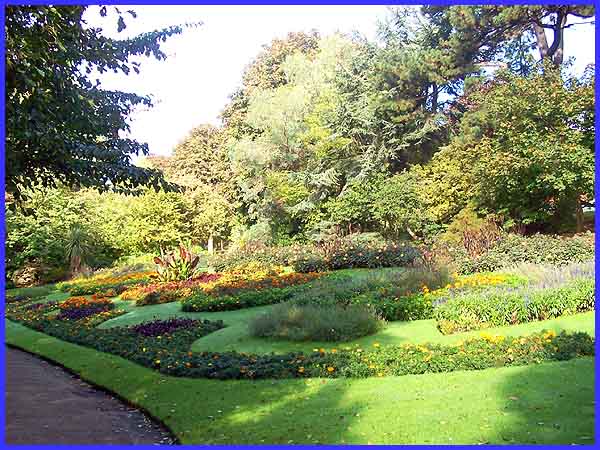
On the slope that leads down to the lake is a Victorian flower
garden where attractive and colourful flower beds sit neatly
in the well tended grass. Many plants here and elsewhere in the
Arboretum would have been in evidence when the park was first
laid out but a number of new species have been planted for the
benefit of today's population and also to maintain the Arboretum
as a botanical collection for future generations.
|
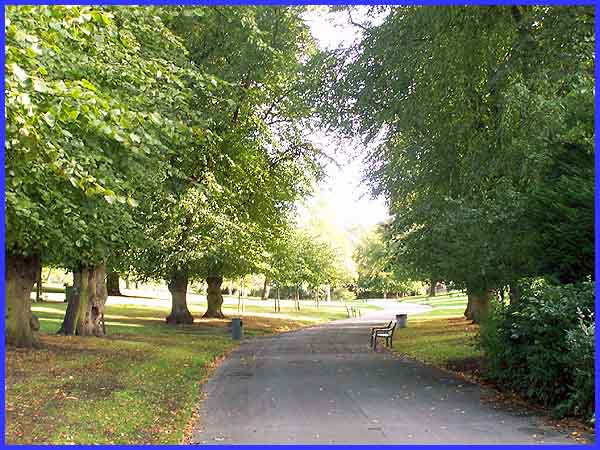
Continuing our walk through the park we took the uphill tree-lined
path known as Lime Tree Avenue. The park is just north of Nottingham's
busy city centre - in fact it is the closest park to the city
centre and was the first designated public park in Nottingham.
It is also close to the Nottingham Trent University and many
students residing in the nearby Victorian houses often enjoy
the peace and tranquillity the park offers as a relaxation from
their studies.
|
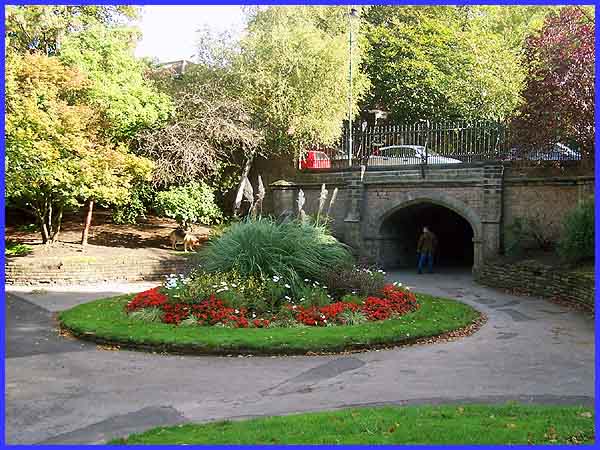
Lime Tree Avenue leads to this circular flower bed where four
paths through the park meet. The Arboretum continues on the other
side of the tunnel to an entrance on North Sherwood Street but
we turned left here to complete our circuit of the park. The
said tunnel under Addison Street is one of nine structures in
the Arboretum that has been designated with Grade II status on
the English Heritage Register of Historic Parks and Gardens.
Another is the circular aviary mentioned earlier.
|
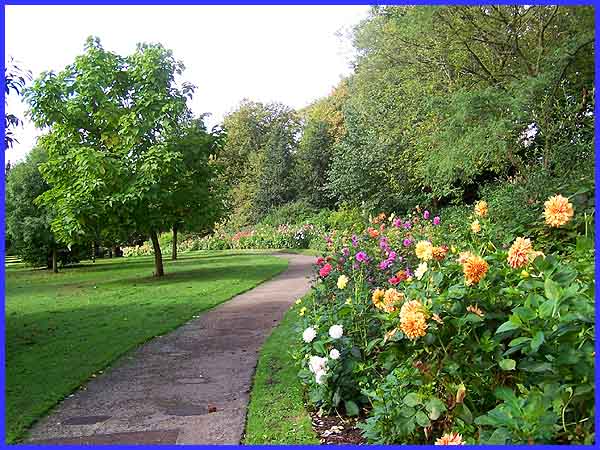
The left hand path splits into two, one leading through an avenue
of trees known as the 'Woodland Walk' and this one above, meanders
by the famous 'Dahlia Border', full of dahlias of all shades
and varieties. This splash of colour seen from Lime Tree Walk
merited closer inspection and it certainly does not disappoint.

Since 2002 much restoration work funded by the Heritage Lottery
Commission has been undertaken in the Arboretum and if this rainbow
coloured border has benefited from that grant, it has been money
well spent.
|

